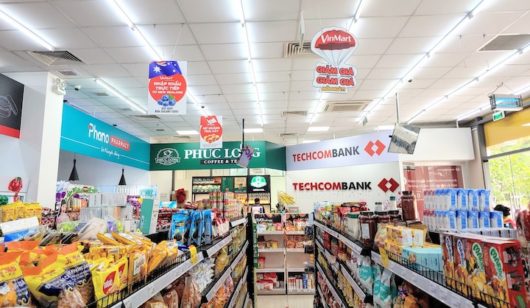The Chinese have got it right. 2013 is the Year of the Snake, and strangely enough, the characteristics of the snake are close to the customer type that retailers are facing now and in the near future.
According to chinesezodiac.com, “Snakes are extremely analytical… they are effective at getting the things they want, even if it means they have to scheme and plot along the way.”
Sounds like the demanding shoppers that retailers constantly face, further heightened by the trend to showrooming.
To be even more precise and prescient, there are different kinds of snake years, and 2013 is the Year of the Water Snake.
“Influential, motivated, insightful, and highly intellectual are words that best characterise water snakes. These snakes enjoy being recognised and rewarded.”
The ancient Chinese could have been talking about the customer who is influenced by friends on social media, does her homework on the web, and expects both a great deal and preferential treatment when she eventually chooses to buy.
So if we accept that the power balance has permanently shifted to customers, and that we can’t put the snake back in the metaphorical basket, we have to charm ‘em, or risk being bitten.
Here are eight ways* to do just that in 2013.
1. Be personal
One of the biggest things that retailers can do to convert sales in 2013 and beyond is to recognise customers as individuals, offer tailored product and service solutions, and reward them personally.
The emerging era of Big Data enables us to achieve a level of customer understanding and intimacy on a mass scale that has simply not been possible before.
As was noted in a recent 2013 trends piece on www.stores.org, “if retailers are not talking to shoppers on a more personal level, the conversation will end… quickly.”
The near future is all about going from “unknown to understood”, as Jeff Clementz, MD of PayPal Australia, told me earlier this year.
So long as customers opt in on their mobile device, they will expect to be recognised upon entering a store, and they will want to know that the sales assistant understands their likes/dislikes and purchase history.
Going even further, technology is now available to electronically scan a customer’s body at the lease line of an apparel store and instantly gauge his or her sizing, saving valuable time at the clothing rack.
Personalised Pricing is also a major new force. PwC/Kantar Retail’s report, Retailing 2020: Winning in a Polarized World, says that “value will become more personalised, where a retailer’s pricing dialogue with its best shoppers will be centred on private conversations personally tailored to that customer’s preferences”.
The personalisation trend will increasingly extend to customised product too. We are already seeing this with NIKEiD, and Converse Originals. But in 2013 and beyond, the stakes will start to be raised much further, with the rise of digital fabrication through 3D printing. (See the youtube clip below).
2. Be open
To the 2013 customer, transparency is critical in all areas of a retailer’s offer and operation. The more open you can be, the more that customers will believe in your brand and your offer.
US outdoor clothing company, Patagonia, is painfully truthful about what goes into manufacturing each of its products, for example for a particular jacket, “135 litres of water, enough to meet the daily needs of 45 people”.
Its breakthrough website, The Footprint Chronicles, exposes Patagonia’s supply chain, publishing details about every factory it uses.
Transparency of course extends to price. In a constantly connected world, retailers can’t hide from price comparison on comparable items, so in addition to price guarantees, smart merchants are offering wi-fi in store to enable customers to easily research and compare for themselves.
3. Be engaging
In 2013, the shift will continue from retail that is highly transactional to highly experiential. Bricks and mortar retail in particular will see more ‘experience spaces’ – places customers actually want to hang out.
Apple Stores were one of the real pioneers in rethinking retail environments, letting shoppers get their hands on product, plus allowing them the time and space to read email or check Facebook if they so desired.
Digital will infiltrate physical spaces more and more, with the prime example this year being the Burberry store on Regent Street in London.
4. Be generous
Value is a given in 2013, and it’s about working out exactly what makes up your value proposition, and then enhancing it as much as possible.
If part of the value for your retail offer is convenience, for example, then same-day delivery might be a turbo-charger. (Note: time frames on delivery are speeding up, and online retailers are trying to match their offline competitors for convenience – allowing you to jump online, purchase and get your goods faster than the process of going to a physical store.)
Retailers also need to be generous with terms and conditions and return policies. Less is more – less fine print, fewer questions asked.
5. Be distinctive
In both positioning and product, retailers will need to be incredibly sharp to survive and prosper in 2013.
The retail landscape continues to polarise, splitting between extreme value formats at one end of the spectrum (Aldi, Costo), and specialty retail and luxury at the other end (Smiggle and Louis Vuitton).
The middle is disappearing and more than ever before, retailers need to stand for something.
When it comes to product, the CEO of J Crew, Mickey Drexler, told attendees on the Westfield World Retail Study Tour this year; “you can’t build a company if everything you have is going to be cheaper somewhere else”.
The truth of the new retail landscape is that third party brands have become commodities, spurred on by the likes of Amazon in particular, so you need to create your own brands, and as Drexler says, “dominate, dominate, dominate categories and franchise items”.
If all you’re doing is offering a variation on the next guy, you will be reduced to an argument about who has the cheapest price.
6. Be fresh
Customers get bored easily, so innovation and newness is important. The best retailers in 2013 will continue to evolve their brands and their offers to suit a changing market.
As Drexler said to me this year, “it’s constant reinvention. Not just once, it’s constant”.
You can keep things fresh with new product, new promotions, new ways of interacting through technology and new store formats. Pop ups will continue to proliferate – both physically and digitally in 2013.
Brands such as Walmart, Nordstrom, Starbucks, and Westfield all have ‘innovation labs’ these days to keep the ideas flowing.
Partnerships can also inject newness. In one of the more unusual alliances this Christmas, US discount department store, Target, and premium department store, Neiman Marcus, have teamed up to offer a joint collection from 24 different designers.
7. Be uncomplicated
We live in a highly stressful, highly demanding world that is “always on”. Our days are filled with constant distractions.
As noted by BAV Consulting in a Ford 2013 trends document, “every second, 694,445 queries are entered into Google search. 20,000 new posts are added on Tumblr. 100 new LinkedIn accounts are created. 70 domains are registered.”
As retailers, we need to do everything possible to simplify buying decisions. Ranges need to be effectively edited. Popular choices need to be pointed out (eg. Top 10’s).
Once a selection has been made, we need to make the purchase process easy too, be it online or offline. Amazon’s 1-Click process is a great example of keeping things simple.
8. Be responsible
We’ve talked about considered consumption for some years. This is fast becoming a way of doing business, with retailers like Toms Shoes and Eyewear adopting a ‘one for one’ model, whereby with every customer purchase, another pair of shoes or glasses goes to someone in need.
In the Year of the Snake, we’ll find that customers expect more than ever, and it’s a lot to do with this digital age. Jon Stine from Cisco Systems in the US talks about “internet shaped expectations”.
The internet is about search and transparency, speed, abundance of stock, control and interaction. Customers now expect the same out of any retail experience.
We can’t fight this tide, we need to go with the flow and work even harder to charm customers into buying in 2013.
* Had to be eight – it is, of course, a highly auspicious number in Chinese.
** Jon Bird is CEO of specialist retail marketing agency IdeaWorks (www.ideaworks.com.au), and chairman of Octomedia, publisher of Inside Retail. Email here. Blog: www.newretailblog.com Twitter: @thetweetailer






